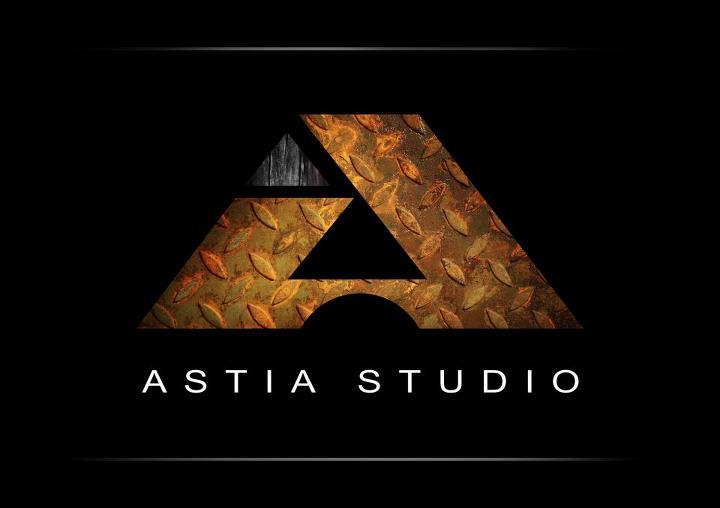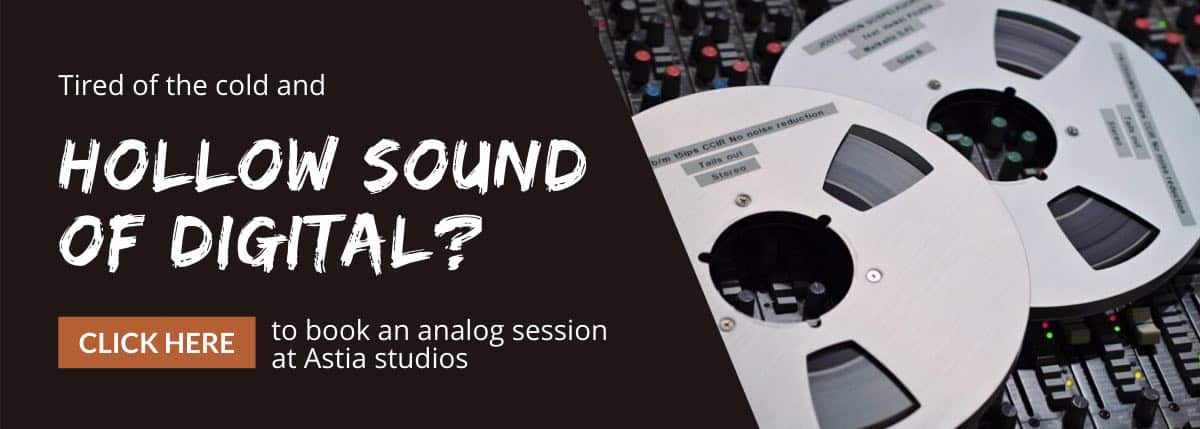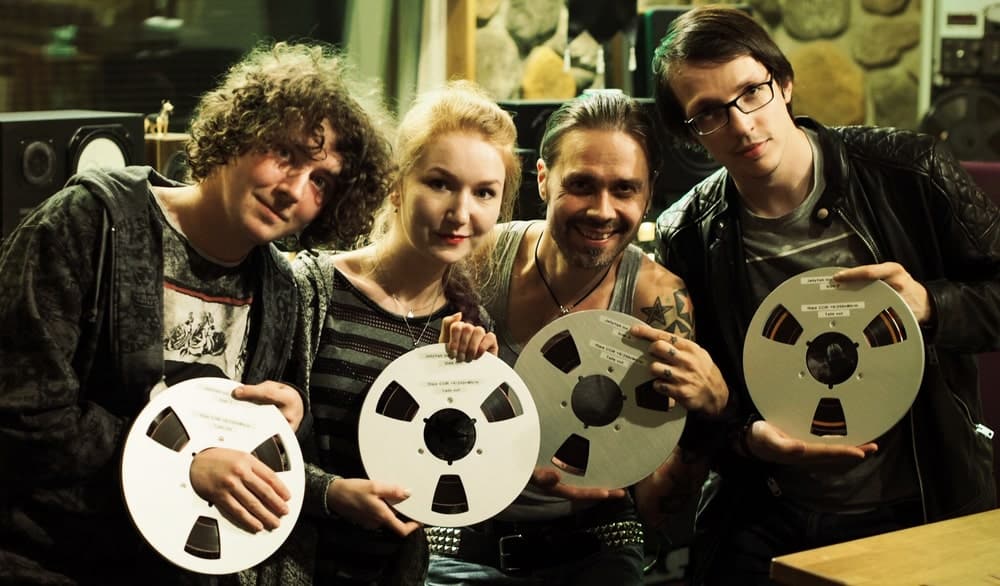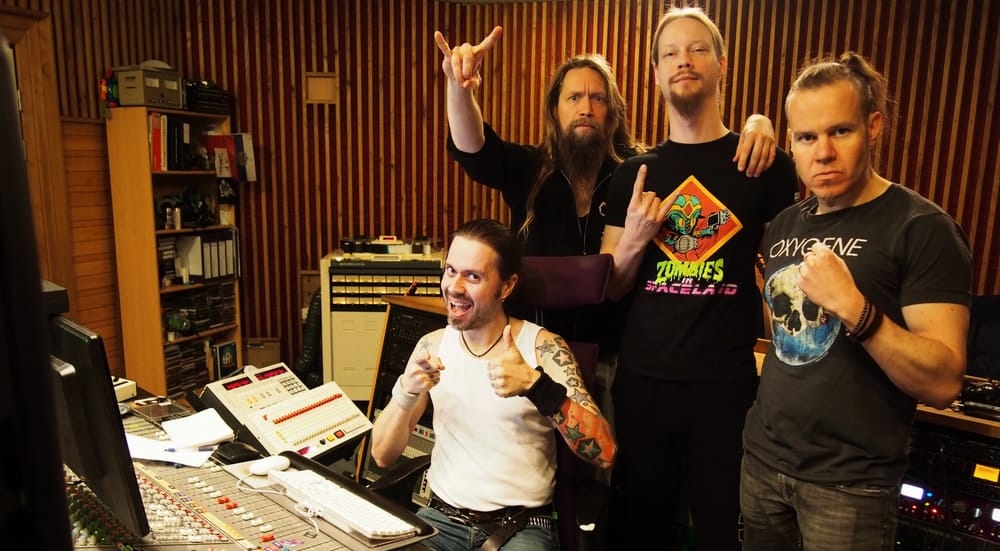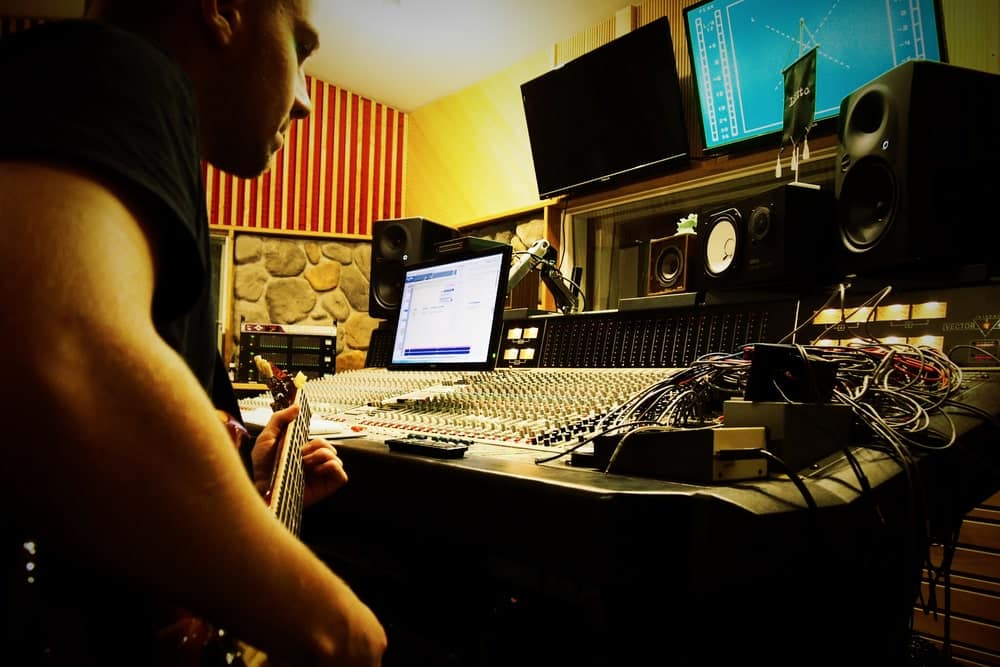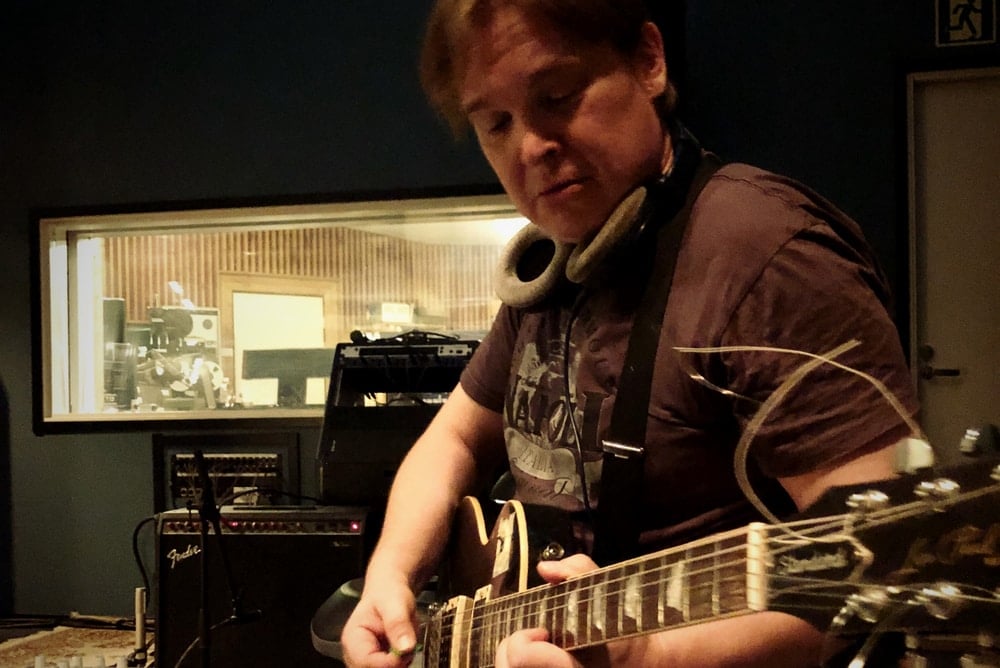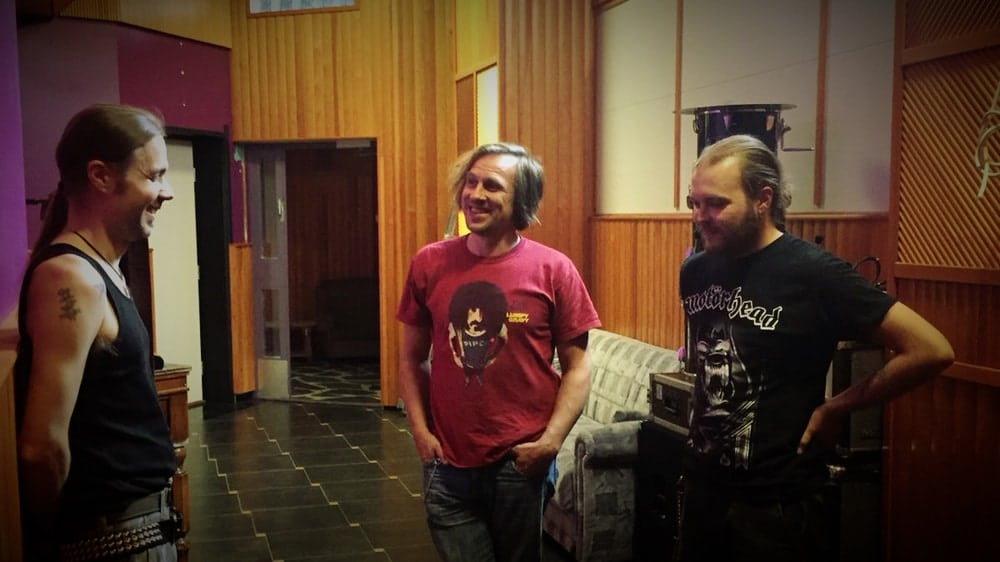How to improve guitar sound pt.2
Guitar players who recently recorded at Astia-studio share their experience about guitar sound and how different factors affect it. Some of them shed light to equipment and different recording approaches on the quest for the ultimate guitar sound. Let’s hear what Masi Hukari, Ivan Apikov, Markus Toivonen, Juho Koski, Matti Hovi and Rami Kinnunen have to say about how to improve guitar sound. We hope you will get lots of inspiration, new insight and tips on how to improve guitar sound.
Read more about the topic: How to improve guitar sound pt.1
Masi Hukari / Faulty Messenger, ex-Apulanta, ex-Amoral
What makes a great guitar sound and which factors affect it?
Guitar sound is affected by every detail in signal chain from pickups to pedals and eventually the amp. The role of cables both in and outside of guitar is significant. It takes a lot of time and money to make all areas work together.Which factors made guitar recording in Astia-studio feel better or worse compared to other situations?
Well. Since the session it took me 5 months to even turn Cubase on in my home studio! The opportunity to record the whole band playing live together in the same room on tape is one of my dearest recording experiences. After that I’ve lost interest in making demos using plugins and software thingies.What have you learnt from the Astia-studio sessions?
The best asset of Astia-studio is the atmosphere that is created together with Anssi Kippo. As studio time is used efficiently there’s also time to enjoy the vital coffee and vinyl breaks. They have a huge effect on your playing!If you have experience recording guitar in different studios, how would you describe guitar recording in front of a subwoofer and the overall atmosphere of Astia-studio?
I’ve done sessions in Petrax, Finnvox, Sound Supreme, Sonic Pump, KC-Sound and many other studios. Guitar recording usually tends to get derailed to unnecessary doodling and fixing things. I’m learning away from all this and also in home recording do my best to record the whole song from beginning to end. Yet it’s essential to play with the whole band in the same room. Sound is alive and the emotion is delivered a lot better. We get energy from each other!How does tape recording at Astia-studio differ from computer or home recording?
I remember when computers started to appear in studios and the common joke was: “You wanna do it fast or should we use computers?”. I wish I could regain the hours wasted on waiting some Atari or early Pro Tools update or restart and the endless adjusting that came along with all that.Sure they got better and then people were blinded by that stuff. 90% of music made between 2000 and 2015 sound hyper-compressed and chocked. When you are artificially recording simulated amps processed with simulating plugins, it’s a far cry to even hope for the result to sound alive. Or like a shaggy-haired singing guitarist once stated during Heinola 10 album recording: “You can’t make a blueberry pie from shit, but at least you get lots of it.”
How would you describe “locking-in” with other instruments and how it can be achieved?
Bass players and playing neatly in sync with them is something I’ve always valued. Those dudes are like neurotransmitters between guitar and drums. When it comes to playing tight together it can only be achieved by playing and I intentionally do not use the word “rehearsing”. Rehearsing is one of my most favourite things, but it’s more like finding yourself and improving. You will find the groove by playing together and listening.I once was in a Ghanaian high life band and was very insecure about the rhythmic diversity that tickled my young European ears. When I tried to copy the pattern of one of the four percussionist he gave me feedback: “Don’t steal my riddim! I play it already. You listen for your own. Then we share.”
We used Vovox cables on your session. How would you describe the difference compared to regular cables?
Vovox was a groundbreaking experience! They change the sound to a lot brighter and clear. Like someone just lifted a blanket from covering the guitar cab!What are your experiences of Astia-studio’s Coolest Tuning Tip Ever?
For years I’ve used Dunlop string-cleaning liquids not to use the same strings longer but because of the touch. I have yet to test if Anssi’s tip works better than Dunlop. I’d think it will as during the whole session I tuned the guitar just once!Would you like to comment on something else?
Nearly all musicians who I’ve changed experiences about Astia-studio say that they never want to record on anything but on tape. And many of those who haven’t experienced this are interested to try. As a huge consumer of vinyl records I gladly welcome back the times when it was all about capturing the performance, emotion and moment instead of creating a product.–Masi Hukari / Faulty Messenger, ex-Apulanta, ex-Amoral
Ivan Apikov / Jellyfish Inn
What makes a great guitar sound and which factors affect it?
I think the key to great guitar sound is in the hands of the guitar player. Sounds boring but still. Of course good analog equipment will help you bring energy straight to the ears of the listener, but never forget one thing – you and only you can make it happen. So be honest with yourself and play clean and loud!Which factors made guitar recording in Astia-studio feel better or worse compared to other situations?
It’s all in the air, I’m sure! Well, I’m talking about the atmosphere. When you go to Astia you do not need to waste time on anything additional. There you can be yourself and easily concentrate on creating something cool, not on trying to make things work. Of course, old-school style tape recording is the mind-blowing Holy Grail! Needless to say, the experience you’ll get from your first tape session will change you forever. So welcome to the analog side of music! Prepare your ears to hear the difference, feel the real guitar sound created by you and only you, not by laptops or stupid plugins.I’m too young to say if Astia totally meets the previous century tape recording standards, but there you can touch the music and fall in love with it. So if you are really tired of the modern guitar sound (it is absolutely dead, baby) – Astia is the rightest way to start the process of recovery.
What have you learnt from the Astia-studio sessions?
The biggest thing I learnt from tape-recording session is that when you are in studio just forget that you are there. Tape will do all the dirty work to provide you as lively sound as possible, but if you are only trying instead of playing – it’s a dead-end and any equipment won’t help to save your ass. So, first things first – you need to relax and just forget you are making a great record. You need to find (and to catch!) the right mood and real connection with your bandmates. All of you should work together – all for one and one for all! Like a massive thing, an organism. I know it may sound strange but understanding all this will help you to create a huge record, believe me.
If you have experience recording guitar in different studios, how would you describe guitar recording in front of a subwoofer and the overall atmosphere of Astia-studio?
We were at some studios here in Saint Petersburg (Russia) and I swear that Astia is on much, much higher level. Hard to describe, but it’s like comparing an amateur hockey club with NHL team. It’s another league, man, no compromise. For sure there are many differences. Each studio naturally has its unique atmosphere, but Astia simply leads you straight to music. You come, you stay, you enjoy and – boom – here is your record! When it comes to guitar, tape session is awesome because everything is working for you and with you.Big subwoofer provides a fantastic experience – the music is going straight through you. You are dancing with guitar as there is no need to concentrate on hearing your bandmates – they are there with you! You can even run and jump during the recording – like on live concert! Never thought that I’d be the one in charge of the guitar sound of a record, but there I was hearing myself playing exactly what I’d always wanted to play. Lovely!
How does tape recording at Astia-studio differ from computer or home recording?
Oh man. You really need to learn all the material properly and you need to do this before the session. You must control the dynamics because no one will do this for you. No copy/paste, bro. Only your skills with the helpful hand of Anssi, of course. You don’t need to be a monster-metronome man, but you must listen and especially pay attention to your bandmates. It will help you sound like a band and not just a lonely guitar player. And don’t forget about tuning your instrument! It’s very important because there’s no autotune or other cheats.To capture the live energy you should play the whole song from beginning to end, not only chorus or bridge part. It can be difficult especially at first, but sooner or later you will love this way of recording, I’m totally sure of that.
How would you describe “locking-in” with other instruments and how it can be achieved?
As I mentioned earlier, you need to be relaxed. Relax, listen and play. If it doesn’t work, then relax, listen and play. When the “locking-in” happens you’ll know it for sure, because you will both feel and hear the difference. You think this is some kind of magic? Well maybe, but if so then you yourself are the magician. Remember that you are not alone and the whole band is there with you. Success will come as soon as you forget that you are “recording something big” and concentrate on having a good time with your close friends by playing great music together. Don’t try to play with the drummer, just feel his groove and do your best to connect – attack the strings!We used Vovox cables on your session. How would you describe the difference compared to regular cables?
Mmmm, Vovox! It’s an ultimate solution for every guitar player who wants his guitar to sound like a guitar and not like a wooden-something with a strings on it. I was impressed by what Vovox does to guitar signal. Many other brands say their cable makes your guitar signal flow or sing or other commercial shit. Vovox simply works. It’s not making your guitar sound better as it keeps the sound true instead of adding “something special” to it. And this is exactly what I was looking for! By the way, their power cable can bring new life to your amplifier! The best way is to hear it rather than read about it, yet I was truly shocked about the difference! Absolutely brilliant!What are your experiences of Astia-studio’s Coolest Tuning Tip Ever?
Many many guitar players believe you need to change strings during recording as often as possible. Tuning is definitely one of the key factors for a good recording and old strings are not suitable for studio because of poor tuning, noise and so on. Anssi Kippo will beat those myths. Of course, correct tuning is necessary, but old strings can be your best friend during the session. No matter how old your strings are – isopropyl alcohol and a cloth will make old strings sound like new. You don’t need to waste money on new strings and your nerves on tuning and stretching and tuning. I witnessed that the whole album can be recorded with just one or two sets of strings. And it sounds both solid and awesome.Would you like to comment on something else?
Go to Astia and be prepared that the first guitar recording session on tape will provide you an absolutely new level of experience and will most likely change your life!
Markus Toivonen / Ensiferum
What makes a great guitar sound and which factors affect it?
I think great guitar sound consists of a skilled musician with the right kind of touch. Then a quality (tube) amp like MesaBoogie Mark V and a good-sounding guitar, where i.e. pickup, wood and strings play a huge part. Big factor in guitar sound is where, with which guitar and by whom the recording is done.When recording with Anssi Kippo at Astia-studio we learned that instrument, speaker and even the power cable affects the sound. Better cable delivers better sound. Probably the most remarkable factor in guitar sound is whether it is recorded digitally on computer or analogue on tape. Tape simply sounds better also on drums, bass and everything else we made the comparison with.
What are your experiences of Astia-studio’s Coolest Tuning Tip Ever?
When Two Paths album guitar recording with Anssi Kippo at Astia-studio started, we bumped into a very common problem; getting guitars in tune wasn’t happening, until Anssi brought a bottle of isopropyl alcohol and used it to thoroughly clean the strings. After that the chords were exactly in tune even without touching the tuning knobs. We used this tuning tip as soon as there were any signs of detune. We didn’t change any strings during the session and the tuning knobs needed adjusting only few times.
Juho Koski / Spell Of Torment
What makes a great guitar sound and which factors affect it?
It consists of the instrument and pickups along with the touch of the musician and his dynamics. When using a tube amp you cannot hide even the small mistakes. Some black/death metal bands use transistor amps, but I prefer tube. I think tube amps are a big part of the sound Spell Of Torment has.Which factors made guitar recording in Astia-studio feel better or worse compared to other situations?
On our earlier sessions at Astia we had instruments tuned to C and D and that wasn’t too great. We had made demo versions, but hadn’t rehearsed or completed the songs properly. In studio we used a lot of time choosing the right option as we had not done our homework. C tuning sounded like rubber because the strings were no good for that, yet we used the tuning anyway. On the third, our debut album session we returned to standard tuning and the sound was crystal clear.What have you learnt from the Astia-studio sessions?
During our first session we had no idea about “locking-in” and how to play relaxed. On the second session there were moments when I was relaxed and not thinking while playing, but still something wasn’t right with my guitar playing. On third session we had made some progress, yet the most difficult thing was to stay relax and “locking-in”. Mentally the hardest thing was to play all guitar parts including acoustic guitars along with all lead vocals. I had never done anything so tough, yet we managed to capture amazing energy on tape.If you have experience recording guitar in different studios, how would you describe guitar recording in front of a subwoofer and the overall atmosphere of Astia-studio?
Astia-studio live room has great atmosphere. You sit on the throne with headphone on, adjust the balance and play. Dimming the lights will help to get in the mood.How does tape recording at Astia-studio differ from computer or home recording?
Digital loses energy and clarity. Tape captures all the energy and clarity.How would you describe “locking-in” with other instruments and how it can be achieved?
The magic of “locking-in” cannot be put into words. Probably the best way is to feel the drums and sway along. Here as well I would use words like being relaxed and clear your mind.We used Vovox cables on your session. How would you describe the difference compared to regular cables?
Before the session we made a comparison using my Marshall tube amp. I played a while using the instrument and speaker cable I’d brought with me. The sound was dark and hollow. We changed the instrument cable and sound became a lot more present. Then we changed the speaker cable and sound became more bright in a pleasant way and the wrong kind of darkness was gone. It’s unbelievable how much a cable affects the sound!What are your experiences of Astia-studio’s Coolest Tuning Tip Ever?
Thru-out the session we cleaned the strings after a couple of takes with isopropyl alcohol. Strings felt and sounded bright and new. From then on I have used this method and recommend it to everyone.Would you like to comment on something else?
You should know the sound you want before the session. New strings are definitely needed and make sure you have the right pickups. Be relaxed and learn to play the songs so that you don’t have to struggle with any part. It’s important to know what and how to play so that you don’t have to start learning in studio.
Matti Hovi / Ghost Of Youth, Matti Hovi Collective, The Siissidös
The most important factor in guitar sound comes from the touch of the guitar player. Great masters like David Gilmour, Esa Pulliainen and Alex Lifeson sound great on any guitar. To become a serious guitar player; a guitar-smith, artisan of sound – in an old fashioned way – you need to search your soul and reflect it in your playing. I think even a mediocre unique sound is a much greater thing compared to the ability to copy guitar players like Slash or Kerry King.
Concrete things are also important. Guitar player should get familiar with different guitars, amps, effects, strings, picks and techniques. You shouldn’t go to studio to search for the sound of your life. Something you can imagine, but cannot summon. Even the most skilled studio musician might not create the sound needed. It’s better to test and search for your own unique sound, use time to refine it. In the hands of a skilled recording engineer a good sound will ennoble to even juicier sound.
–Matti Hovi / Ghost Of Youth, Matti Hovi Collective, The Siissidös
Rami Kinnunen / Faulty Messenger
What makes a great guitar sound and which factors affect it?
As an old-schooler a great guitar sound comes from the musician’s touch. Strongly on the second place is the amp that can replicate different moods with different dynamics. Everything else is mainly icing on the cake. I get inspired from effect pedals, especially distortion pedals and have gathered a board full of them between guitar and amp. I use pedals more as an eq. Effects are mostly bypassed if the song doesn’t need any highlighting.In Astia-studio guitar sound was done in a very professional and simple way respecting the sound of the guitar player. I strongly believe that when the sound source is right a skilled studio engineer can record it as it is. Our final result sounds familiar. I appreciate.
Which factors made guitar recording in Astia-studio feel better or worse compared to other situations? If you have experience recording guitar in different studios, how would you describe guitar recording in front of a subwoofer and the overall atmosphere of Astia-studio?
The atmosphere at Astia-studio itself is inspiring and soothing. The analogue equipment in control room alone made it feel like this is where it’s at, and with great sound. Big cheers for Anssi especially for creating the atmosphere. The listening system in studio was awesome and a huge factor was the PA system in drum room that made tracking feel in the whole body. This helped to get rid off too much self-criticism during recording and made me focus on bandmates and the playing together.On several sessions I’ve suffered from the rec light syndrome; once the record is on, the playing gets bad as I try to focus too much on myself and trying. Thru-out the latest session I didn’t pay any attention to it. Only when we were listening the take I felt the tension, but it was too late as we already had nailed the songs. I don’t know if feeling secure is something that comes with age or from just the right circumstances and atmosphere, without forgetting the bandmates.
What have you learnt from the Astia-studio sessions and how would you describe “locking-in” with other instruments?
Rehearsing and pre-production to the finest detail before the studio is highly important to guarantee great session and to keep the emotion euphoric. We managed to do this in rehearsal room before the session. Once we reserved the studio we decided to use the previous month rehearsing the songs we planned to record. I think the biggest advantage was that we all were almost too familiar with the material. This allowed us more freedom during recording and to play unchained. The final version has many elements created during recording that we didn’t have on any rehearsal.The biggest thing in the session was how overdubs “lock-in” and how to hear it. It’s all about what you hear, not about how-much-in-grid you are. You need to catch the groove the right way. On the session I didn’t do any overdubs and I’m glad to have gotten to see how Anssi works on harmony vocals and acoustic guitar recording.
How does tape recording at Astia-studio differ from computer or home recording?
I confess that I am a full analog man. This is how you should record; effortless, in good atmosphere and with a skilled recording engineer using analogue equipment and mixing like that too. Just the fact that the hypnotic computer screen was missing helped to focus more on what you hear and feel. I believe this to be the biggest difference between digital and analogue studios. Good studio monitors in control room is also great to have. It’s difficult to put into words but it feels like tape captures more than you hear; it’s deeper and more 3D.We used Vovox cables on your session. How would you describe the difference compared to regular cables?
On our latest session it was a bit of a surprise how much the instrument cable affects the sound in a very positive way. Vovox cables turned out to be much better than expected. They brought a new dimension to my Deluxe amp. The sound didn’t get that dark when turning the guitar volume down. Yet, the biggest factor was in the touch. It felt like the cable brought more dynamics to how the amp feels; playing soft or hitting the strings hard. The difference is difficult to put down in words. Quiet playing sounded clear and the amp reacted pretty strong. Louder parts were also a lot more clear and it all could be heard.What are your experiences of Astia-studio’s Coolest Tuning Tip Ever?
The tuning tip was welcome to the one like me who uses Jazzmaster. The whole session was free of tuning problems, even though we did a couple of 13 minute-long takes that included using whammy bar. I’ll definitely use this method on sessions to come. It helps you mentally as you know you can concentrate on playing instead of tuning.–Rami Kinnunen / Faulty Messenger
End of part two
Thank you for reading the comments from Masi, Ivan, Markus, Juho, Matti and Rami about guitar sound and how to improve it. If this post was helpful, please share it on social media. This way you will help your friends to benefit from the information.
I cannot wait to reply your questions and comments so please do leave them below. You can To reserve a full analog tape recording session with me here at Astia-studio click here. Thank you very much and all the very best!
Astia-studio is a full analog recording studio located in eastern Finland with 25 years of experience. Bands and artists from all over the world including USA and the furthest corner of Russia, Vladivostok have arrived to us for tape recording sessions.
